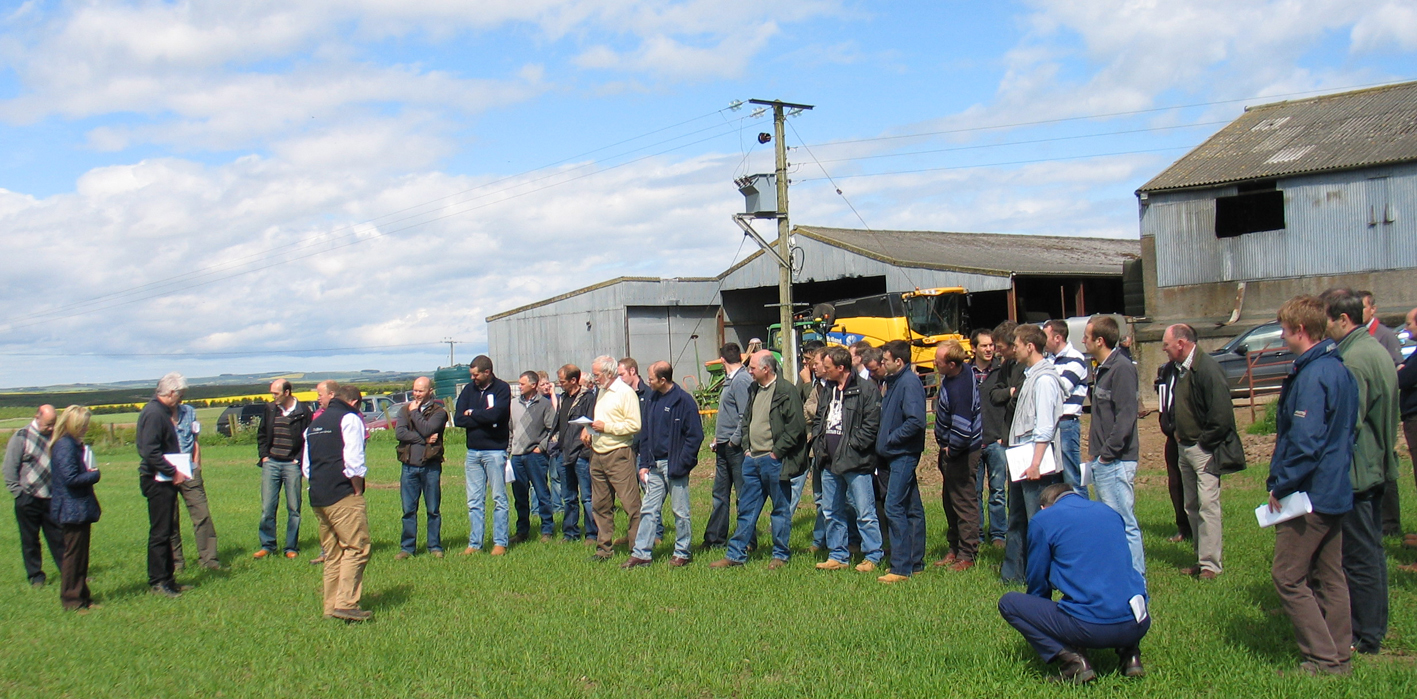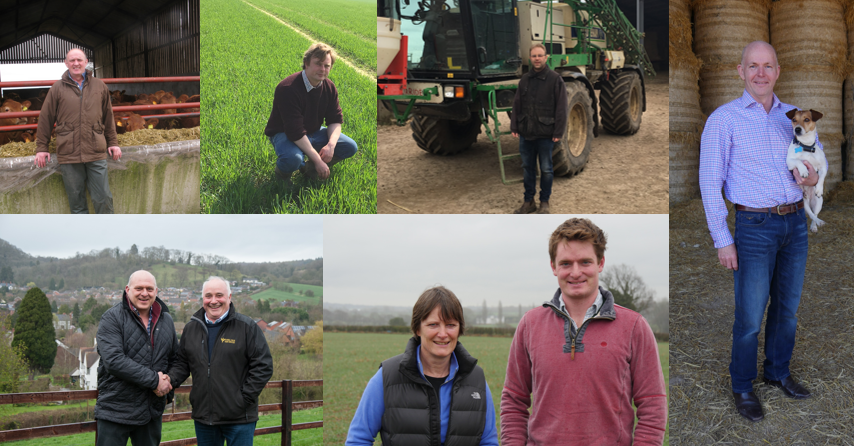
Six new farms will join AHDB Cereals & Oilseeds’ Monitor Farm network this summer, as the organisation launches the next phase of the programme.
The new hosts are spread across the country and build on the success of the previous farms at a time when the first English and Welsh projects come to the end of their three-year term.
The six new farms are in Chelmsford, Saltburn, Malmesbury, Brigg, Hereford and Basingstoke.
Benchmarking will continue to be an integral part of the project, helping farmers to measure and manage their input costs and margins on their way to building more resilient businesses.
Monitor Farms bring together groups of like-minded farmers, who wish to develop or expand their enterprises, in an environment which encourages them to share critical performance information. This information is discussed and evaluated by the group, encouraging and facilitating business improvement through the adoption of new technology and practices.
'Positive impact'

Tim Isaac, Head of Knowledge Exchange for AHDB Cereals & Oilseeds, said: “The scheme has exceeded all expectations in its positive impact on the industry, with a wide spectrum of participants getting involved, sharing and taking improvements back to their own businesses. So now is the right time to take the programme to the next level.
“We’ve also seen that famers really value the opportunity to share their experiences and learn from one another and this will become even more valuable as the industry prepares for the challenges of the future.”
Adrian Joynt, farm manager at the Apley Estate and host of the Bridgnorth Monitor Farm said: “Benchmarking has helped me to identify our strengths and weaknesses. Sometimes they’re not where you think they are. We’ve certainly learned a lot, especially from the discussions within our group.”
The new groups will use AHDB’s Farmbench programme, which for the first time brings together cereals, oilseeds, beef, lamb and potato enterprises into one piece of software.
It will allow farms to benchmark multiple enterprises on one system, saving time and effort and encouraging a whole-farm approach.
Meet the farms
Chelmsford
Christy and Hew Willett farm at Parklands Farm in Galleywood on the fringe of Chelmsford, Essex.
This mother-and-son team farm in partnership across 475 ha of arable cropping, with a mixture of owned and rented land. Their rotation is typically two wheats followed by spring beans/OSR, although this has become more flexible since 2012 to include spring barley and spring oats, based on the condition of each field.
The farm has recently moved to a strip-till system and is focussed on the significant challenge of grass weed management, including black-grass and ryegrass. Most of their wheat is destined for local millers.
The farm has diversified into horse liveries, as well as office and industrial lets. Christy and Hew see their greatest challenge as keeping their cost of production as low as possible without sacrificing yield.
They are keen to use benchmarking, on-farm trials and discussions from the Monitor Farm programme to improve and develop their farm business in these critical years for the industry.
Saltburn
John Aynsley runs a 1,302 ha mixed farm near Saltburn-by-the-Sea in the north-east of England.
Covering 566ha he grows a rotation of winter barley, oilseed rape, and wheat on light loam to heavy clay. Combinable crops are established using a min-till approach and all grain is dried and stored on farm.
In addition to the arable enterprise John also manages 1,300 breeding ewes and 450 spring-calving suckler cows. The main challenge which John aims to address on the farm is soil management. John is already a member of the Darlington Benchmarking Group and has been benchmarking since it started.
By participating in the Monitor Farm programme, he hopes to prepare his business to be profitable without direct payments.
Malmesbury
Roger Wilson farms in partnership with his brother Peter at Lower Odd Farm in Wiltshire.
They have 170ha owned land plus 10ha rented grassland. The arable rotation is flexible, incorporating winter wheat, oilseed rape, spring beans, winter and spring barley as well as grass leys. All crops are dried and stored on-farm.
The farm has a beef herd which are fed home-grown cereals. Key challenges for the farm are the threat of ryegrass, inconsistent bean yields, rape establishment, pyrethroid resistance and managing the farm’s heavier soils. During the three years of the Monitor Farm programme, Roger would like to address topics including succession, soil management and the evaluation of variable rate fertilisers.
Brigg
Colin Chappell farms with his family at Gander Farm near Brigg, Lincolnshire.
The lowland mixed arable and beef unit has 615 ha combinable crops and 32 ha permanent pasture. Colin’s arable rotation is normally peas or oilseed rape, followed by two wheats.
He recently replaced his second wheats either with spring wheat due to black-grass pressure, or maize on lighter land for a local AD plant.
During the three years of the programme Colin hopes to look at succession, joint venture farming and how his farm can survive in a post-EU Britain.
Hereford
Russell Price and Martin Williams are between them hosting the new Monitor Farm for Herefordshire. Included in their rotations wheat, barley, peas, beans, oilseed rape and potatoes.
Martin farms 800 ha arable crops on the banks of the River Wye at Fownhope, and also has a small flock of Jacob sheep and rents out land for grazing.
Martin’s particular challenges are trying to decrease his cost of production, be successful in a very competitive market and to efficiently manage crops with limited chemical availability.
On the Herefordshire/Worcestershire border, Russell Price’s arable farming operation includes 360 ha farmed in-hand, 290 ha contract farmed and 130 ha potatoes grown.
The challenges faced by Russell’s business include black-grass, improving soil health, efficiency of crop nutrition and building a resilient farming business to withstand volatility.
Working together to form this joint Monitor Farm, Russell and Martin are confident that this collaboration will allow them to make comparisons in their businesses, thus providing a wide array of topics around which local farmers can share knowledge and best practice.
Basingstoke
Hugh Crosbie Dawson has worked on the 1,626-ha mixed Freefolk Farms near Basingstoke since 2011.
The 800 ha arable cropping is split across owned, rented and contract farmed land. The farm’s rotation includes milling wheat, spring barley, oilseed rape and peas, all grown on predominantly chalky soil.
In addition to the arable enterprise the farm has 150 dairy cows and 500 breeding ewes. There are three full-time arable staff as well as a herdsman, Hugh and his father.
A min-till approach is adopted where possible, although the farm has used the plough this year for the first time in 15 years, in order to combat grass weed pressure. Other enterprises on the farm include commercial lettings, self-storage and a solar farm.
Hugh’s ambition for the business is to reduce fixed and variable costs, increase efficiency and make further use of precision farming methods. During the Monitor Farm programme Hugh is also interested in benchmarking with other farmers and exploring break crops.
